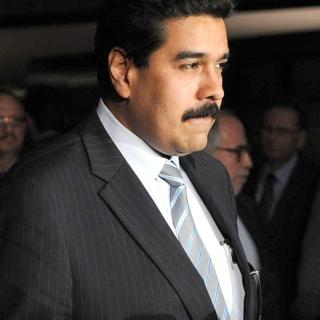Advertisement
Since its inception and especially the time of the layout of the landmark campus The Oval, The Ohio State University senior administration occupied space near the top of the central area. Since 1924, they occupied Bricker Hall, beside the original University Hall of 1873 (demolished in 1970, replaced with the present structure—under renovation now—in 1976.)
The century-old building was named The Administration Building. In 1983, it was renamed for John Bricker, an Ohio racist and segregationist. Ohio Attorney General 1933-1937, Governor 1939-1945, and Senator 1947-1959, Bricker was a 1916 OSU graduate and member of the Board of Trustees for more than two decades.
With no public notice and, so far, signage on the unaesthetic cookie-cutter new structure only for the fast-food spots with outdoor patios that share the space on so-called University Square, the administration departed from The Oval and the OSU campus itself for a disconnected and isolated space on the east side of North High Street across the street from the university itself.
University Square is one element of OSU’s Campus Partners’ un- or anti-development of the campus area. Occupying space formerly home to student, faculty, staff, and alumni haunts over decades, the administration takes unleased, unoccupied space. In this, they follow the example of the loss-leading Gateway development. After its original lessees all failed, OSU business and administrative departments moved in to take the vacant, unproductive space.
University Square is a typical Campus Partners slippery slope. The website states that the private mixed-used multiple buildings (two so far) and parking structure is “led” by Campus Partners, OSU’s financial loss-leading “arm” that “partners” with for-profit private developers. For almost 30 years, they have greatly overpaid for buildings mostly to be destroyed, held them for too long, and then sold them to private developers at significant financial loss.
Campus Partners does incalculable harm to the campus area, its history, and character. Their beneficiaries construct unaesthetic, inappropriately designed overpriced student apartments buildings that are no more than half-filled because of high price and oversupply. Yet the neighborhood destruction does not stop. The City and the unrepresentative self-interested “neighborhood” groups do nothing to aid the area.
Because of earlier mismanagement, Campus Partners now hides their private developer “partners.” These “senior partners” profit hugely from the non-profit advancement of for-profit activities.
At the same time, as of late June 2023, University Square website makes no mention of the OSU administration. They too are hiding the escape from the campus core. We must ask why? Johnson directed the escape from which she is no longer a party into unrented, excessive, empty space. That circles the square across the street from OSU.
It is revealing that not only is there no official announcement. There are no directions on The Oval or on Bricker Hall itself to the new location, and no identification on 15 E. 15th Avenue, unoriginally named South University Square. Most OSU websites continue to specify the administration’s site as on The Oval. A few like the Office of Academic Affairs contradictorily list both addresses. I learned accidentally in conversation with one college dean.
The OSU administration is clearly in hiding. South, and North, University Square is across the street from the land grant campus. They are not part of the physical campus. A very busy major street with sidewalks overflowing with illegal scooters divides the two. OSU and the City of Columbus profit from refusing to regulate scooters like all other cities and universities do.
My anonymous but trustworthy sources are clear about the reasons why. They fit well documented patterns. With all possible contradictions, the recently resigned and departed President Kristina Johnson ordered the relocation of the administration that she headed for less than three years.
The “Born to Be a Buckeye,” “Buckeye Love,” “Model 21st Century Land Grant University,” and “Scarlet and Gray Advantage Plan”--of which almost no students have heard--president feared for her own security.
In the words of my source, the “ex-president’s obsession with her personal security” drove “the flight from Bricker Hall. Now the senior OSU administration [including the office of the Board of Trustees] is ensconced in a gated building with guards, etc., while the academic 99% take their chances on campus.” Since the ex-president does not know the history of the 19th century origins or the 20th century development of public land grant universities, the administration’s location likely made no difference to her.
Does this seem far-fetched? Moving the administrative off-campus is part of a pattern.
OSU is the only university that I know where the president’s house is not on or near the campus. It is more than 6 miles away on the other side of Columbus in the incorporated town of Bexley, Ohio. The Pizzuti house was presented to OSU by the developer family in 2000. They had renovated it and lived there themselves beginning in 1975. The Pizzutis exchanged the house for the former University Residence also in Bexley. The difference in property values was deemed a “gift” by the university.
The original president’s residence was built on campus in 1856 and purchased by OSU in 1871. It occupied the site of the present Mershon Auditorium. The house became the Music Building in 1927 and was demolished in 1949. Some OSU presidents lived in the University District. As far as anyone knows, Johnson only set foot in the University District once, to speak misleadingly to the media on private property without permission about crime on and off campus. This is one of her many forgotten threads.
In autumn, 2022, then President Johnson informed the President’s and Provost’s Advisory Committee, with whom the president always met in person at least once each semester or quarter by its charter, that she “saw no need” to continue meeting with the group of Distinguished University Professors and Ohio Eminent Scholars. The provost would take her place. This is unprecedented.
Johnson did not meet with students. Her office announced an application procedure for any student who wished to see the president. They must apply formally including submitting an essay. Some of my student neighbors and friends made the effort. No one was ever granted an appointment.
To public relations fanfare, Johnson taught an undergraduate course on climate and environment. This is very far from her own field of expertise in electrical engineering, which she left for administration some years ago. Students in the course related that she was seldom present. On some occasions, the Senior Vice President for Administration, who is neither a teacher nor a scholar, sat in. The class functioned, for better and for worse, with project groups.
Even more dramatic and widely publicized was Johnson’s failing spring 2022 confrontation with student environmental activists. On the occasion of one of her several self “awards” by tiny west campus Chadwick Arboretum, a group of students interrupted the show. Johnson froze at the front of the room. One of her handlers stalked to the lectern, and attempted to scold the brave, articulate young adults. He yelled, “why didn’t you contact the president through regular channels.” Two students immediately responded: “we tried for six months with no response.” They received none on this occasion.
Silence followed. Astonishingly and near tragically in 2022, no one in the president’s party including the former professor of engineering herself had any idea what to do. It seems that despite her age and experience, ex-President Johnson had never heard of “a teachable moment.” It never occurred to her to ask the students simply and directly to share their concerns with her and the others in the room.
More than six months after Katrina Johnson publicly announced that she tendered her resignation and two months after she departed OSU, I must ask: why did she accept the presidency of one of the largest universities in the United States especially after having never led a campus of any size by herself? Of what—plural—is she afraid? What does Johnson’s failing presidency tell us about the state of higher education today?
A note on Bricker Hall in OSU and US higher educational history
Bricker Hall has an important, revealing history. This parallels former president William Oxley Thompson for whom the university library at the top of The Oval is named with an over-sized statue occupying space in front of it. For decades, Thompson who was also a Presbyterian church leader who actively led efforts to maintain race-based school segregation and oppose integration in the Columbus public schools.
John Bricker was responsible for the 1932 removal of OSU student Doris Weaver’s from her reservation for space in the Department of Home Economics residential laboratory after the department learned that she was Black. Weaver sued the university for re-acceptance to the Home Management House and the Department’s laboratory. As expected at the time, the court ignored all evidence and declared counter-factually that Weaver was “not denied educational advantages and was granted the same privileges as other students.” She was not.
The court required OSU to show why Weaver was denied admission. Alumnus, Ohio AG, and Board of Trustee member, Bricker unconscionably, dishonestly, and legally irrelevantly proclaimed that “it was not under the universities authority to urge students of different races and nationalities to room together.” OSU’s student The Lantern reported this on March 4, 2021, citing the University Archives. Of course, dishonesty and conflict of interests are the Ohio and OSU Ways.
Early in 2021, OSU’s Undergraduate Student Government passed a resolution urging the university to remove Bricker’s name and rename the administration building for Doris Weaver. USG struggled with the University Archives for two years to gain access to relevant sources.
Through spokesperson Ben Johnson, the university distracted and obfuscated--business as usual. Now, the Administration has abandoned their historic central campus site. However ironically or contradictorily, the Department of Economics is moving in, despite other more distinguished and larger departments having a greater need for new space. Perhaps the name better fits.
To date, OSU’s administration and Board of Trustees ignores repeated calls from students and the community to rename these landmark buildings, move the statue, and add markers with historical interpretation. This is what major universities have done for several decades, ranging from Princeton, Harvard, Georgetown, and major public universities. But not OSU.
----------------------------
Harvey J. Graff is Professor Emeritus of English and History at The Ohio State University and inaugural Ohio Eminent Scholar in Literacy Studies. Author of many books, most recently he published Searching for Literacy: The Social and Intellectual Origins of Literacy Studies was My Life with Literacy: The Continuing Education of a Historian. The Intersections of the Personal, the Political, the Academic, and Place is forthcoming. “Reconstructing the new ‘uni-versity’ from the ashes of the ‘multi- and mega-versity’” is in progress.



